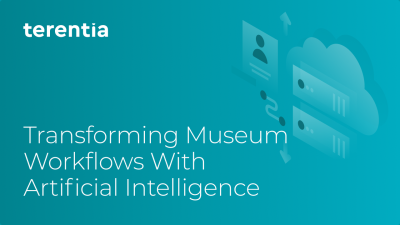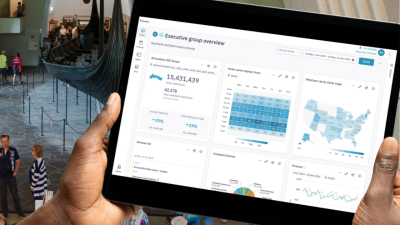
Today AAM published a collection of fifteen papers exploring the next horizon of museum practice with regard to voluntary repatriation, restitution, and reparations. This is your invitation to explore the collection together with thoughts on how you might use these essays to guide your work.
The Context for This Collection
At its heart, strategic foresight consists of four essential steps:
- Know where you’ve been.
- Understand where you are now.
- Decide where you want to go next.
- Figure out how to get there.
Put that way, it seems simple, yes?
But simple isn’t the same as easy. A lot of my time is spent learning and teaching skillful ways to take these steps. One important thing I’ve learned is that this journey is easier when you recruit others to help us along the way. Historians, elders, scholars, archivists, and lore-keepers can help us remember where we’ve been. People actually doing the hard work of whatever needs to be done can offer a shrewd assessment of where we are now, and how well we are doing.
The next step—deciding where we want to go next—is often an order of magnitude harder. Left to themselves, our brains are wired to extrapolate the future as a straight line from the past through the now and forward—resulting in a more mature (and entrenched) version of the present. One of the most important truths about the future is that it isn’t predetermined. At any given point we face many potential futures, some of which are better, and others worse, than we might assume. To help overcome mental myopathy, we can enlist the help of people with well-developed imaginations—storytellers who can paint pictures not just of how the world is, but how it could be.
This is the approach I’ve taken in applying foresight to museum work, most recently in AAM’s exploration of the arc of history, from past to future, of repatriation, restitution, and reparations. The first report from this Next Horizon of Museum Practice project documented how the relationships between museums and descendants of communities whose culture they steward have changed over the last decade, and where that leaves us now. That report shared stories of how some museums were repatriating some collections not because the law said they had to, but because their values told them that such so-called voluntary repatriation was the right thing to do. And it showed how those shifts are changing how museums think and talk about the collections they steward—talking about belongings, for example, rather than objects, or ancestors, rather than human remains, language that reflects deeper changes in the relationships between museum people and descendant communities, and between the living and the non-living.
To help with step three—envisioning where we, as a field, want to go next—I enlisted the help of an amazing working group (credited below) in recruiting a diverse array of writers to share their visions of what preferable futures might look like with respect to voluntary repatriation, restitution, and reparations. The resulting collection consists of fifteen papers by authors writing from the perspective of their communities, academia, and museums (some from the intersections of these three domains). By sharing these visions of potential futures, AAM hopes to provide museum people with the inspiration that fuels change and the courage to disrupt any current practice that no longer serves its purpose. I encourage you to browse the titles, pick a few that catch your eye, and dive in. Share stories that resonate with your colleagues, students, and friends. What elements of these stories do you find compelling, plausible, useful? Which paint pictures of futures that you would like to inhabit?
A Preview of Some of the Papers
The collection consists of:
- Opinion pieces, such as that contributed by Ernestine Hayes, Professor Emerita at the University of Alaska Southeast, writing, from her perspective as someone belonging to the Wolf House of the Kaagwaantaan clan of the Lingít nation, of a future in which everything that was taken grows old and dies where it belongs.
- Academic foresight, including a paper by Fabio Mariani, Lynn Rother, and Max Koss at the Provenance Lab of Leuphana University Lüneburg, on digital cataloguing as a reparative practice.
- Speculative fiction, like David Zvi Kalman’s mind-bending story that challenges us to consider whether an object’s provenance can have power equal to or exceeding the object itself.
It addresses museums’ relations with descendant communities from various points of view—for example:
- Victoria Phiri Chitungu and Samba Yonga of the Livingstone Museum and Women’s History Museum, Zambia, exploring a future in which digital repatriation can be a means in which African cultural objects in foreign museums are reconnected with their embedded Indigenous knowledge and communities of origin in Africa.
- Marc Masurovsky, co-founder of the Holocaust Art Restitution Project and Director of Research for the Presidential Advisory Commission on Holocaust-Era Assets, on a future in which museums treat the provenance of an object as equally worthy of storytelling as its creation, especially in the case of looted or stolen works.
- Laura Van Broekhoven, drawing on her experience as director of the Pitt Rivers Museum at the University of Oxford to envision how museums can be part of a process of societal healing by enabling community-led work towards reconciliation and prioritizing listening, cultural care, and epistemological equity.
- Jessica Harris, President, Descendants of Enslaved Communities at the University of Virginia, describing a future in which a future in which descendants of enslaved communities have an equitable, reparative seat at the table as we strive toward true repair and stronger museums.
This collection caps the second phase of this Next Horizon project. I’m hoping to tackle the fourth key step in foresight—figuring how to get to our preferred futures—in stage three. Please reach out to cfm (at) aam-us.org if you might be interested in hosting a workshop on this topic at your museum or conference, and please, please share ideas about partners and potential funders for this important work.
Yours from the future,
Elizabeth
Elizabeth Merritt, VP Strategic Foresight & Founding Director, Center for the Future of Museums
Gratitude and Acknowledgements
This project has been made possible by the generous support of the David Berg Foundation.
And by the wise guidance of the Next Horizon Working Group:
- Antonia Bartoli, Curator of Provenance Research, Yale University Art Gallery
- Kalewa Correa, Smithsonian APAC curator of Hawai’i and the Pacific
- Michael Glickman, jMUSE Founder and CEO
- Jane Pickering, William & Muriel Seabury Howells Director of the Peabody Museum, Harvard University, Boston, MA
- Brandie Macdonald, Executive Director, Indiana University Museum of Archeology and Anthropology
- Stephen E. Nash, President and CEO, Archaeology Southwest
- Ashley Rogers, Executive Director, Whitney Plantation
- Noelle Trent, President & CEO of the Museum of African American History, Boston and Nantucket
- Nii O. Quarcoopome, Curator &, Department Head of Africa, Oceania & Indigenous Americas at Detroit Institute of Arts
- Richard West, Founding Director & Director Emeritus Smithsonian NMAI









Comments